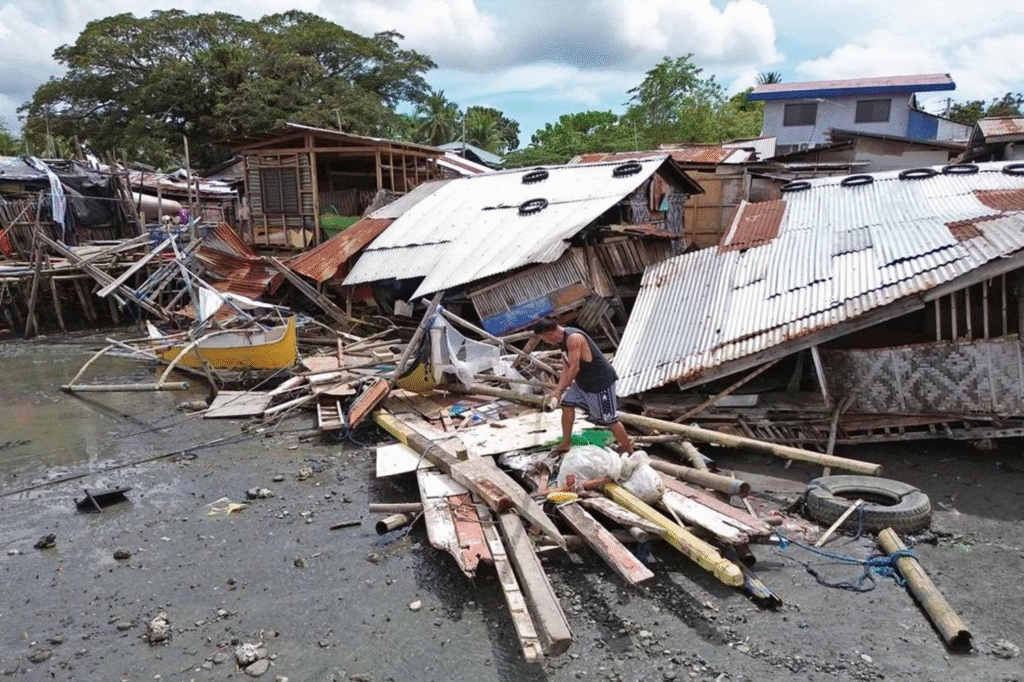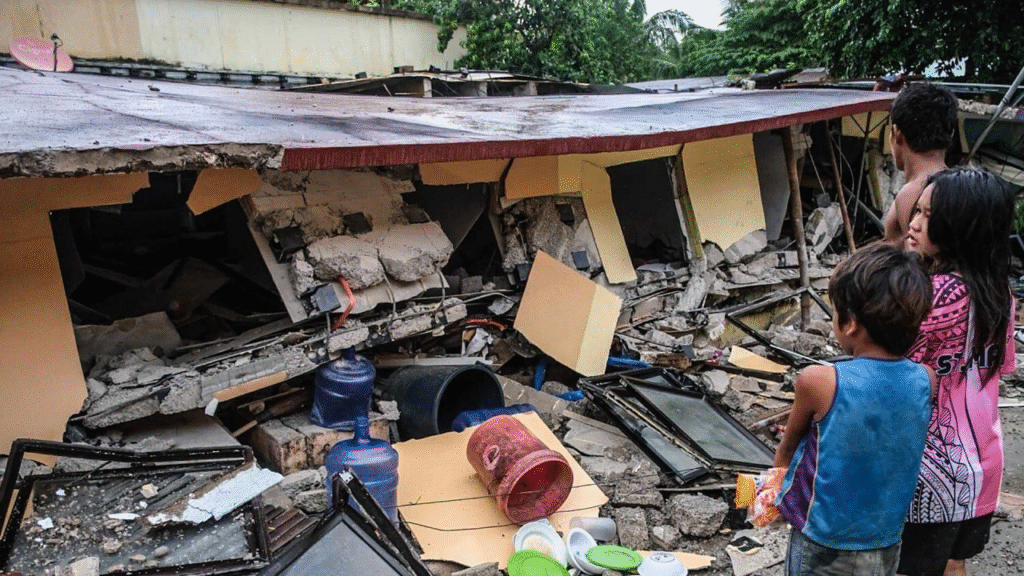Massive 7.6-Magnitude Earthquake Rocks Philippines — Tsunami Warning Issued for 12 Coastal Provinces, Thousands Evacuated
A powerful 7.6-magnitude earthquake struck the Philippines, triggering tsunami warnings across 12 coastal provinces. Thousands have been evacuated as authorities rush to assess damage and ensure safety in what could be one of the strongest quakes to hit the region in years
A massive earthquake measuring 7.6 magnitude struck the Philippines on Friday, the country’s seismology agency said. The powerful quake triggered a tsunami warning and evacuation advisories for coastal areas.
In a latest update, the Hawaii-based Pacific Tsunami Warning Centre said the tsunami threat in the Philippines had passed. Howver, alerts from other agencies remained in effect.

Earlier in the day, the Philippine Institute of Volcanology and Seismology (Phivolcs) said the offshore quake hit waters off Manay town in Davao Oriental, Mindanao, at a depth of 10 km.
The agency warned of possible damage and aftershocks.
Phivolcs urged residents in coastal areas of the central and southern Philippines to move to higher ground or further inland as a precaution.
There were no immediate reports of casualties or damage.
Following the earthquake, the Pacific Tsunami Warning Centre said dangerous waves could occur within 186 miles of the quake’s epicentre. Waves up to 3 meters high were possible along parts of the Philippine coast, with smaller waves expected in Indonesia and Palau.
The governor of the southern Philippine province of Davao Oriental said people panicked when the earthquake struck.
“Some buildings were reported to have been damaged,” Reuters news agency quoted Edwin Jubahib as saying to local media. “It was very strong.”
Meanwhile, videos are circulating on social media, showing fear and panic among people as the quake strikes.
A video from the Tagum City Davao Hospital shows panic among patients and staff rushing to evacuate, running for their lives amid the tremors.

Another footage taken at what seemed to be a fish rearing outlet, showed water in the glass containers and buckets shaking violently.
As a precaution, a tsunami warning was also issued in Indonesia for its northern Sulawesi and Papua regions, warning of waves as high as 50 cm hitting the country’s shorelines.
Friday’s powerful quake struck just two weeks after the Philippines’ witnessed the deadliest earthquake in over a decade, which killed 72 people on Cebu.
That earlier quake was magnitude 6.9 and also occurred offshore.
A powerful 7.6-magnitude earthquake struck the southern Philippines late Friday night, triggering widespread panic and prompting tsunami warnings across 12 coastal provinces. The tremor, one of the strongest to hit the region in recent years, sent thousands of residents fleeing from coastal towns to higher ground as authorities warned of potentially dangerous sea surges.
According to the Philippine Institute of Volcanology and Seismology (PHIVOLCS), the earthquake occurred at a depth of around 32 kilometers (20 miles) off the coast of Mindanao, the country’s second-largest island. The quake was felt in several cities including Davao, General Santos, and Cagayan de Oro, with reports of buildings swaying, power outages, and communication disruptions in some areas.

Shortly after the quake, PHIVOLCS issued a tsunami warning advising residents along the eastern coastline of Mindanao and nearby islands to move away from the shore and seek higher ground. Sirens were heard in multiple towns, and local authorities began large-scale evacuation efforts as a precautionary measure.
The Pacific Tsunami Warning Center (PTWC) also confirmed the potential for hazardous waves in coastal areas, warning that sea-level fluctuations could be observed for several hours after the quake. Local coast guards have suspended sea travel and advised fishermen not to venture out into open waters.
The Philippine National Disaster Risk Reduction and Management Council (NDRRMC) activated emergency protocols immediately after the quake. Teams were dispatched to assess structural damage, monitor aftershocks, and provide relief support to affected areas.
President Ferdinand Marcos Jr. was briefed on the situation, and government agencies were instructed to remain on high alert. “The safety of our people is our top priority,” a government spokesperson stated, adding that rescue and medical teams have been deployed to ensure rapid response to any incidents.
Residents described scenes of chaos as the ground violently shook. “It felt like the earth was rolling beneath us. Everyone ran outside crying,” said a resident of Surigao del Sur, one of the hardest-hit provinces. In some areas, minor landslides and damaged roads were reported, making rescue operations challenging.
Social media platforms were flooded with videos showing trembling buildings, falling objects, and frightened residents seeking safety. Many spent the night outdoors, fearing aftershocks that could cause further destruction.
The Philippines lies on the Pacific Ring of Fire, an area known for intense seismic and volcanic activity. The country experiences hundreds of quakes each year, though most are minor. However, the 7.6-magnitude earthquake is among the strongest recorded in recent decades, drawing comparisons to past disasters such as the 2013 Bohol earthquake and the 1990 Luzon quake.

As of early Saturday morning, PHIVOLCS reported multiple aftershocks, some exceeding magnitude 5.0. Authorities continue to monitor sea levels and infrastructure stability. While no major tsunami had been confirmed at the time of writing, experts caution that secondary waves or delayed surges could still pose a threat.
Neighboring countries including Japan and Indonesia, which also lie along the Ring of Fire, have offered assistance and technical expertise. The United Nations Office for Disaster Risk Reduction (UNDRR) expressed solidarity with the Philippines and commended the swift action of local authorities in issuing early warnings and conducting evacuations.






